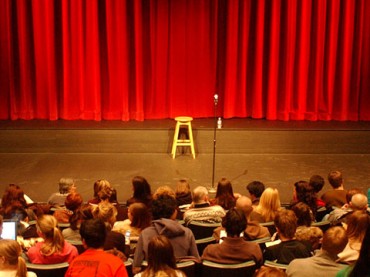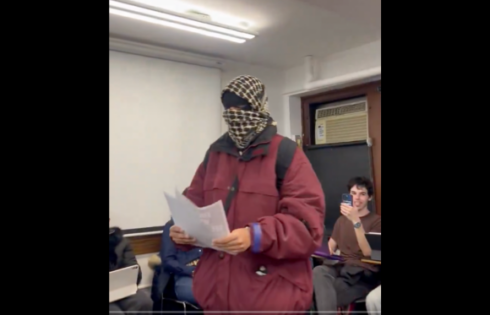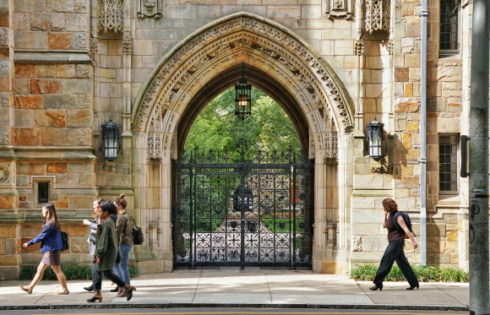
The humanities are facing curious trends these days. While the percentage of students majoring in a humanities field has barely budged in the past two decades, other fields considered solid for high earnings, such as business, haven’t fared much better. The sciences appear to be leaving others in the dust.
The murkiness of some data, and its variation among private and public institutions, also provides ammunition to academics with different views on the state of the humanities.
American Academy of Arts and Sciences (AAAS) data from 1987 through 2010, part of its Humanities Indicators project, show the humanities hovering around 12 percent of majors for most of the 1990s and 2000s. Business and marketing have stayed around 21 percent in the late 2000s, falling from 24 percent in the late 1980s but rebounding from 19-20 percent in the late 1990s, while engineering – at 11 percent in 1987 – hasn’t topped 7 percent since 2007.
“All sciences” together – behavioral and social sciences, health and medical sciences, life sciences and physical sciences – have steadily grown, according to AAAS data. Starting at 25.9 percent in 1987, they cracked 30 percent for the first time in 2009.
Scott Saul, an English professor at the University of California-Berkeley, wrote in The New York Times last year that the declining-humanities narrative is a “half-truth.” The trend is most pronounced in “prestigious private universities” such as Cornell, Yale and Harvard, where English and history majors have plummeted, he said.
Fewer students have been declaring majors such as writing or Greek because they have become aware of just how hard it is to find a job, says William Chace, the former president of Emory University. He is a professor at Stanford University and author of One Hundred Semesters: My Adventures as Student, Professor, and University President, and What I Learned Along the Way, published in 2006.
Writing in The American Scholar in 2009, Chace said that foreign-language majors dropped from 2.5 percent in the 1970-71 school year to 1.3 percent in 2003-04, as one example of the humanities’ decline.
Chace said schools’ pursuit of money, such as federal grants, has led them to hire “necessary non-faculty employees” such as development officers. He quoted historian Lynn Hunt of the University of California-Los Angeles, who said “The university staff as a whole is getting bigger, but the relative presence of faculty, secretaries, and janitors is actually declining.”
Humanities faculty have taken a hit because they “bring in almost no outside income,” unlike economists, computer scientists and “almost everyone in the medical sciences,” Chace wrote in The American Scholar. They are seen as “consuming money in salaries, pensions, and operating needs,” which is all “institutional,” he said.
It can be hard to tell the broader trends facing the humanities. AAAS said that faculty growth in the humanities (50.7 percent) actually outpaced U.S. postsecondary enrollment growth (40 percent) from 1999 through 2012. But U.S. Department of Education figures that show part-time instructional faculty outnumbered full-time faculty as of 2011 “do not differentiate among the academic fields,” AAAS said.
Individual institutions don’t necessarily make it easy to tell how the humanities fare there, either. Stanford’s undergraduate profile says that 30 percent of incoming students declare a major in “humanities and sciences” while more than 50 percent are undeclared.
Private schools may feel the pinch more acutely, unable to keep classes with lower attendance.
Point Loma Nazarene University, with an undergraduate enrollment around 2,600 and a cap of 750 on its incoming class, plans to phase out five majors by the 2017 school year, which together account for 54 students, according to a campus-wide email from provost Kerry Fulcher in April. Three of those – theater, Romance languages and philosophy/theology – are humanities.
Fulcher told The College Fix those three together only included 18 students, with philosophy/theology majors in particular dropping 70 percent in the past six years. Romance languages, meanwhile, were already scheduled for a phase-out two years ago when French was proposed, and the Spanish major continues as well, Fulcher said.
College Fix contributor Samantha Watkins is a student at Point Loma Nazarene University.
Like The College Fix on Facebook / Follow us on Twitter
IMAGE: Mohammad Jangda/Flickr





Please join the conversation about our stories on Facebook, Twitter, Instagram, Reddit, MeWe, Rumble, Gab, Minds and Gettr.